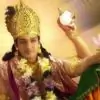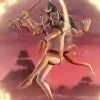Chapter 22 of Yudha Kanda says
Ocean the lord of rivers spoke these words to Rama who knew all scientific treatises.
"O, excellent man! This one, named Nala, a glorious person, is the son of Vishvakarma; who was given a boon by his father and is equal to Visvakarma. Let this greatly energetic monkey build a bridge across me. I can hold that bridge. He is just the same as his father." The god of Ocean disappeared from that place. Then Nala, the more distinguished among monkeys stood up and spoke the following words to Rama of great power: The great Ocean disclosed a truth. I will construct a bridge across this large Ocean, taking recourse to the skill and ability of my father. This Sagara, the formidable mass of water, in fear of punishment, gave a passage to Rama, wishing to see a bridge constructed on it. On the mountain of Mandara, the following boon was given by Visvakarma to my mother: "O, god like lady! A son equal to me will be born to you. I am a son born of Visvakarma's own loins. I am equal to Visvakarma. This god of Ocean has reminded me. The great ocean spoke the truth. Being unasked, I have not told you my details earlier. I am capable of constructing a bridge across the ocean. Hence, let the foremost of monkeys build the bridge now itself.
Then, being sent by Rama, hundreds and thousands of monkey heroes jumped in joy on all sides towards the great forest. Those army-chiefs of monkeys, who resembled mountains, broke the rocks and trees there and dragged them away towards the sea. Those monkeys filled the ocean with all types of trees like Sala and Asvakarna, Dhava and bamboo, Kutaja, Arjuna, palmyra,Tilaka, Tinisa, Bilva, Saptaparna, Karnika, in blossom as also mango and Asoka. The excellent monkeys, the forest animals lifted and brought, like Indra's flag posts, some trees with roots intact and some others without roots. From here and there the monkeys brought Palmyra trees, pomegranate shrubs, coconut and Vibhitaka, Karira, Bakula and neem trees. The huge bodied monkeys with mighty strength uprooted elephant-sized rocks and mountains and transported them by mechanical contrivances. The water, raised up due to sudden throwing of mountains in the sea, soured upward towards the sky and from there again, gushed back. The rocks befalling on all sides perturbed the ocean. Some others drew up strings a hundred Yojanas long (in order to keep the rocks in a straight line.) Nala on his part initiated a monumental bridge in the middle of the ocean. The bridge was built at that time with the cooperation of other monkeys, of terrible doings. Some monkeys were holding poles for measuring the bridge and some others collected the material. Reeds and logs resembling clouds and mountains, brought by hundreds of monkeys, lead by the command of Rama, fastened some parts of the bridge. Monkeys constructed the bridge with trees having blossom at the end of their boughs. Some monkeys looking like demons seized rocks resembling mountains and peaks of mountains and appeared running hither and thither. Then, a tumultuous sound occurred when the rocks were thrown into the sea and when mountains were caused to fall there. On the first day, fourteen Yojanas of bridge were constructed by the monkeys speedily, thrilled with delight as they were, resembling elephants. In the same manner, on the second day twenty Yojanas of bridge were constructed speedily by the monkeys of terrific bodies and of mighty strength.Thus, on the third day twenty-one Yojanas of the bridge were constructed in the ocean speedily by the monkeys with their colossal bodies. On the forth day, a further of twenty-two Yojanas were constructed by the dashing monkeys with a great speed. In that manner, on the fifth day, the monkeys working quickly constructed twenty-three yojanas of the bridge up to the other seashore. That Nala, the strong and illustrious son of Visvakarma and an excellent monkey built the bridge across the sea as truly as his father would have built it. That beautiful and lovely bridge constructed by Nala across the ocean the abode of alligators, shone brightly like a milky way of stars in the sky.



























